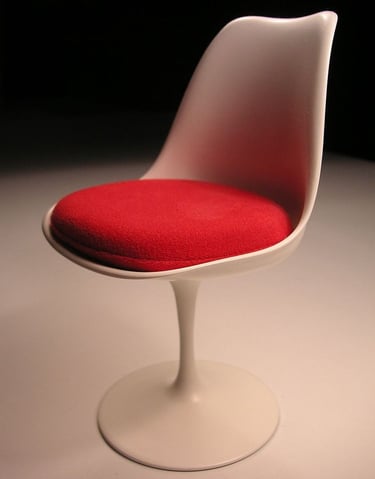Pop Art's Impact on Design
Celebrating the Revolutionary Creativity of Influential Designers
Olivia Masters
7/29/20232 min read


The Pop Art movement of the 1950s and 1960s brought a refreshing wave of creativity to the world of design. With its bold colors, iconic imagery, and playful celebration of popular culture, Pop Art transformed design aesthetics, inspiring designers to break free from conventions and embrace a more vibrant and dynamic approach. In this article, we will explore how Pop Art has left an indelible mark on design and highlight some influential designers who embraced the movement's revolutionary spirit.
Embracing Vibrant Colors and Patterns:
Pop Art's fearless use of vibrant colors and bold patterns revitalized design, breathing new life into everything from furniture to product packaging. Influential designers like Charles and Ray Eames, known for their innovative furniture designs, were among the pioneers who embraced Pop Art's dynamic palette, creating iconic pieces that continue to be celebrated as timeless classics.
Playful Graphics and Iconic Imagery:
The movement's fascination with playful graphics and iconic imagery permeated various design spheres. In graphic design and advertising, artists like Milton Glaser and Paul Rand adopted Pop Art's bold and engaging style to create eye-catching logos, posters, and advertisements. Their designs became cultural touchstones, celebrated for their ability to capture the essence of the times.
Transforming Furniture and Interior Decor:
Pop Art inspired designers to inject a sense of fun and individuality into furniture and interior decor. Verner Panton's innovative designs incorporated bold colors and unique shapes, exemplifying Pop Art's influence on the field. Eero Saarinen's iconic Tulip Chair, with its sleek, organic form, perfectly embodied the movement's spirit, becoming an emblem of modern design.
Architecture and Public Spaces:
The impact of Pop Art on design extended to architecture and public spaces. Architect Frank Gehry, known for his sculptural and expressive designs, embraced Pop Art's playful aesthetic, incorporating vibrant colors and unconventional shapes into his buildings. Public art installations by artists like Claes Oldenburg and Coosje van Bruggen also reflected Pop Art's celebration of mass culture and transformed ordinary spaces into immersive experiences.
Product Packaging and Branding:
Pop Art's influence revolutionized product packaging and branding, turning mundane items into visually engaging works of art. Iconic brands such as Campbell's and Coca-Cola embraced the movement's aesthetics, creating timeless packaging designs that remain relevant to this day.
The Pop Art movement's transformative impact on design is a testament to its enduring creativity and cultural significance. The movement's bold colors, playful graphics, and iconic imagery continue to shape contemporary design, inspiring designers to think outside the box and embrace a more expressive and innovative approach. From furniture and interior decor to graphic design, architecture, and branding, the legacy of Pop Art lives on through the visionary work of influential designers who have celebrated its revolutionary spirit and made a lasting impact on the world of design. As we celebrate these visionary creators, we also recognize the enduring power of Pop Art to captivate and inspire generations of designers to come.
